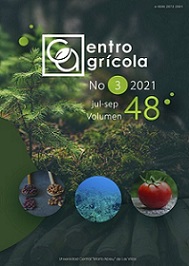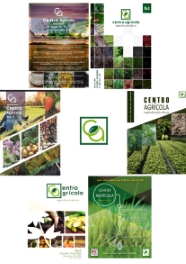CE: 1804 CF: cag05418
SCIENTIFIC ARTICLE
Effect of biofertilization in the morpho physiology and yield of common bean (Phaseolus vulgaris L.)
Efecto de la biofertilización en la morfo fisiología y rendimiento del frijol común (Phaseolus vulgaris L.)
Ariany Colás – Sánchez1, Beatriz Díaz – Pérez2, Alianny Rodríguez-Urrutia1, Sirley Gatorno-Muñóz1
1Centro de Investigaciones Agropecuarias, Universidad Central “Marta Abreu” de Las Villas, carretera a Camajuaní km 5½, Santa Clara, Villa Clara, Cuba, CP 54830
2Departamento de Agronomía, Universidad Central “Marta Abreu” de Las Villas, carretera a Camajuaní km 5½, Santa Clara, Villa Clara, Cuba, CP 54830
E-mail: This email address is being protected from spambots. You need JavaScript enabled to view it.
RESUMEN
Common bean (Phaseolus vulgaris L.) is widely cultivated in Cuba principally in small farm areas because its role as a principal component of the daily diet. The use of effective native rhizobia as natural biofertilizer will positive contributes to the production of this grain. In order to evaluate the effect of single Rhizobium pisi and Ecomic inoculation on morphological parameters and yield of common bean, was performed the present research at the intermediate sowing season of the 2015-2016 (November - January). The study was developed in farm´s areas of CCS "Lino del Rio" under an Inceptisol soil in the municipality of Placetas in Villa Clara province. In the study, the genotype Delicia-364 was used and the parameters of nodulation, root and shoot biomass and yield were evaluated, as well as the possible mechanisms of plant growth promotion of the strains used. All the inoculation variants increased the nodulation and, consequently, the dry biomass. The maximum values in the number of nodules were observed with the inoculation of R. pisi 40983. The yield and its components were positively stimulated with the inoculation of R. pisi 40983 (362 kg ha-1) and 40982 (357 kg ha-1).






